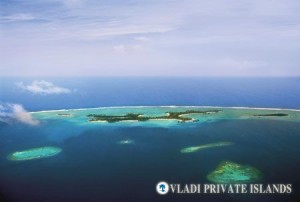The island resorts of the Maldives are working together to rescue the popular tourist destination from impending natural disaster – Private Island News finds out how.
Whilst the effects of global warming have been well-documented throughout the international press, few people are aware that the world’s lowest-lying country – the Maldives Republic – faces an even bigger and more immediate threat than climate change: coral reef degradation.
For a country which owes its very existence to reef building corals, it seems logical that the demise of the reefs will have grave implications. And, after the likes of El Niño (a warm ocean current which originated in the central and east-central equatorial Pacific) in 1998 and further bursts of warm ocean water in 2010 and 2011, the threat of catastrophe is more acute than ever.
As French marine biologist FrédéricDucarme explains, the situation is bleak. The warmer-than-average water conditions had catastrophic effects on the region’s corals, causing a phenomenon known as coral bleaching. When water is too warm, corals will expel the symbiotic algae (zooxanthellae) living in their tissues, causing them to “bleach” and turn completely white.
As well as causing them to lose their incredible colours, the process – if untreated over time – leaves corals weak, starving and susceptible to disease. This was the case in 1998, when the coral tips began to break off from the reefs, leaving behind just bare rock and robbing the country’s low-lying islands of some of their much needed protection from storm surges and higher tides.
“The coral reefs protect the islands and produce billions of tonnes of sand. The fact is that the Maldives will disappear under water without their help,” explains Ducarme. “And by that, I mean even before the widely-reported effects of rising tides can take hold.”
The devastating effects of coral degradation can already be felt throughout the island republic –from the local communities right through to the luxury tourism industry, as architect Armando Kraenzlin discovered whilst creating a new private island resort for the Canadian hotel chain Four Seasons.
Without the protection of the coral reefs, Kraenzlin found that the beaches of Kuda Huraa and Landaa Giraavaru (the site of the proposed Four Seasons resort) were at risk of erosion – a serious problem for an industry which relies on the allure its beguiling beaches to attract guests. With the long-term future of the holiday paradise in danger, it soon became clear to Kraenzlin that neither he nor his employers could afford to turn a blind eye to the problem of coral degradation. And so he sought help in the most unlikely of forms… a Frenchman armed with a whole lot of scaffolding.
After receiving a doctorate in Coastal Oceanographic Studies from the Ecole Normale Supérieure in Lyon, French marine expert Thomas Le Berre dedicated much of his professional career to developing various innovative ways to battle the effects of coral bleaching, including one particularly unconventional method – the Reefscaper Project – which saw him lowering a metal scaffold onto the ocean surface in order to encourage coral growth.
It was precisely this program attracted the attention of Armando Kraenzlin, who enlisted the assistance of Le Berre during the creation of the Four Seasons resort. “There’s not allowed to be so much as a single millimeters-worth of room for maneuver,” explains Le Berre, whilst binding branches of multi-coloured coral to the pyramid of scaffold. “Otherwise they’ll be damaged by the water pressure and won’t be able to grow on to the frame.”
After measuring the expansion of the coral during his latest research mission (a growth of between 6 and 30 cm since June 2014), it’s fair to say that Frédéric Ducarme has already been won over by Le Berre’s admittedly unconventional tactics. “They throw iron into the water – the worst thing that exists – and it ends up helping us. 30,000 kg of living corals were planted here,” he enthused. “That equates to 30 tonnes of sand!”
Ducarme is not the only one to have been convinced by the Reefscapers Project – in the meantime, approximately 3,600 overgrown scaffolds have popped up along the seabed along a grand total of seven of the Maldives’ biggest resort chains, incorporating a huge array of coral species in order to better attract divers and fish and – more importantly – to create a much more resistant type of reef.
His work could be put to the test as soon as next year. A warmer than usual ocean current is already building up off the coast of Chile, which, by the time it reaches the Maldives, could have the same effect as the dreaded El Niño. Le Berre is confident: “Since the bleaching in 2010, we have increased the number of types of coral in order to boost the biodiversity.”
For the sake of the survival of the Maldive Island Republic, Private Island News certainly hopes it’s a success.




